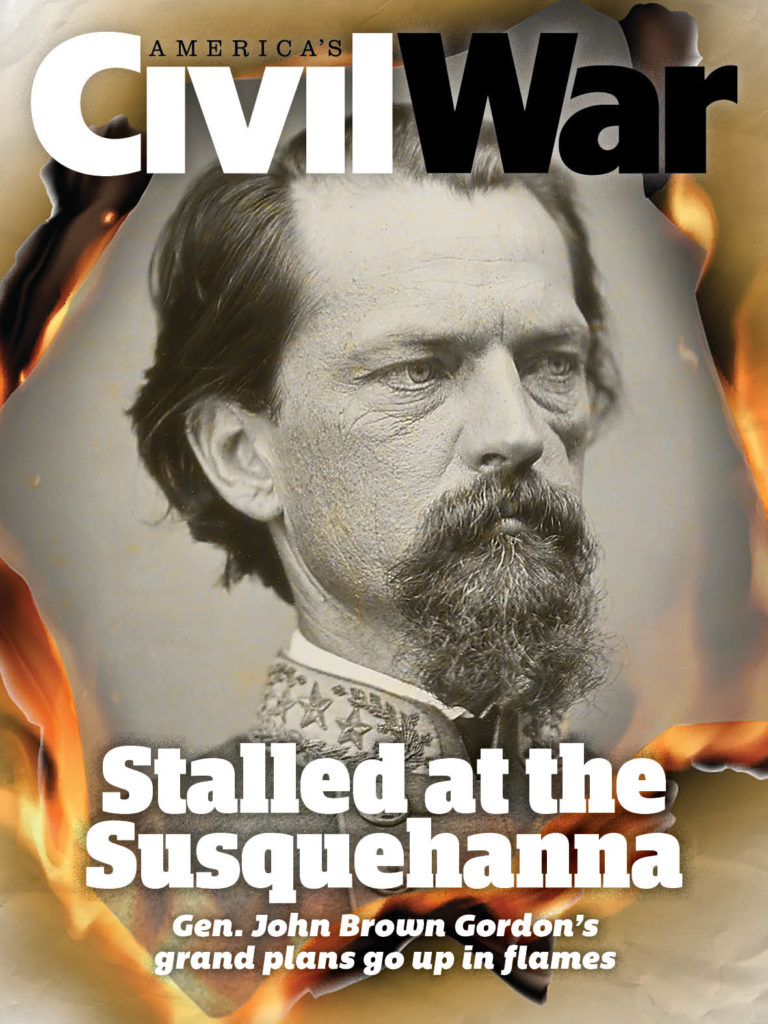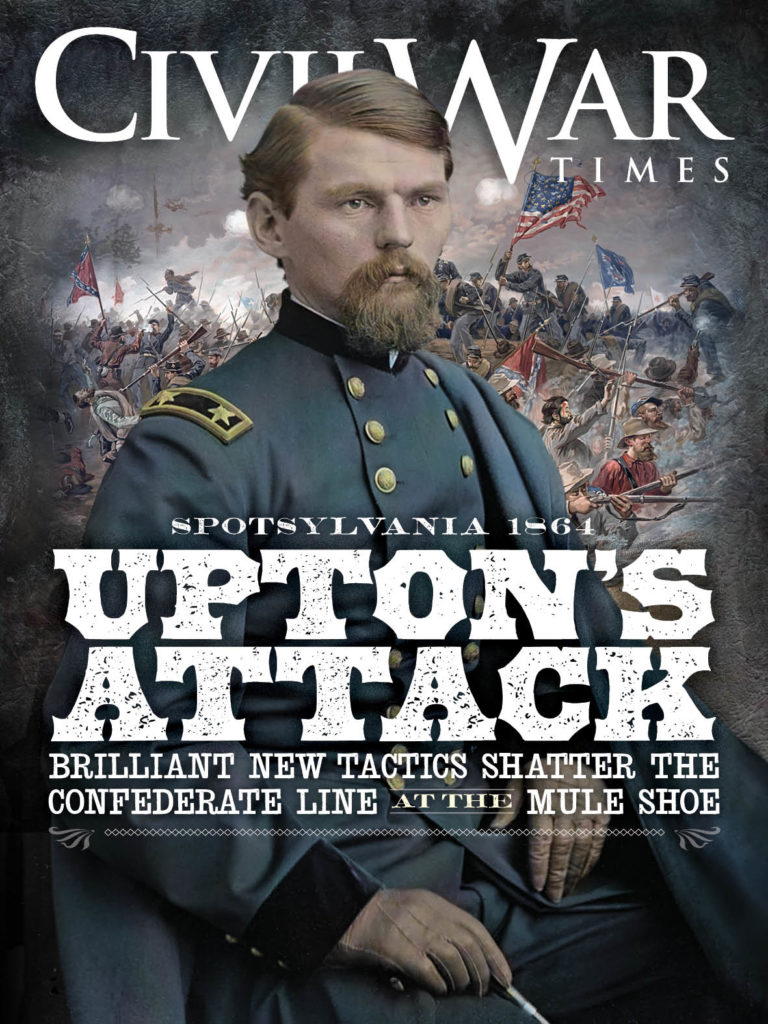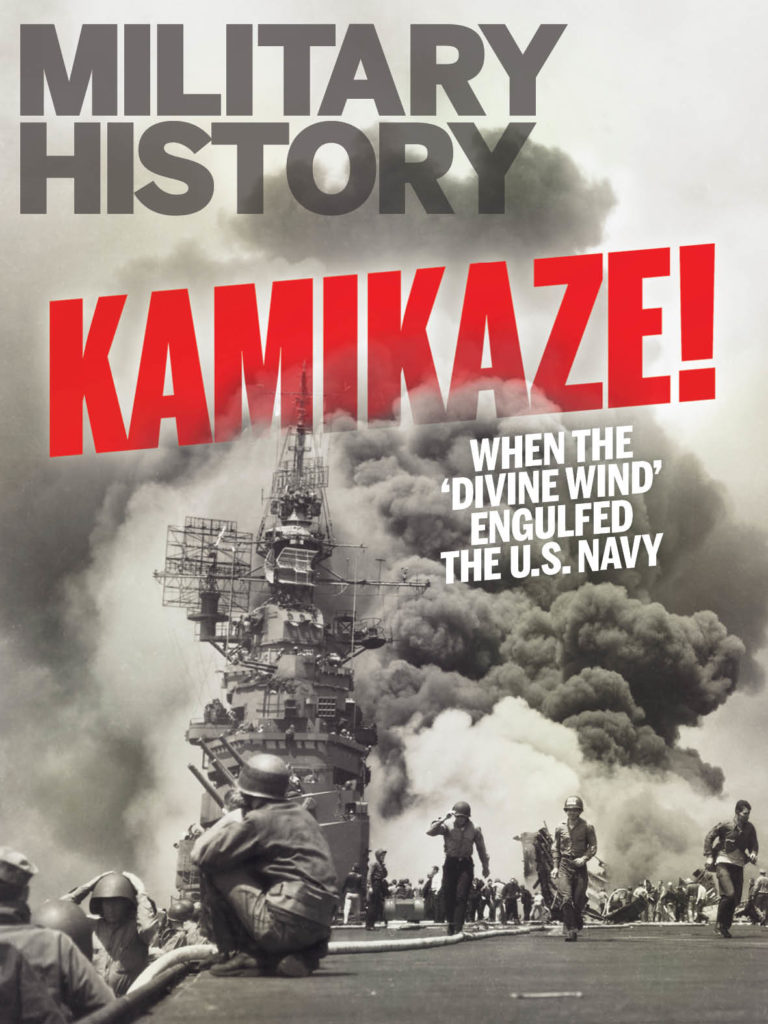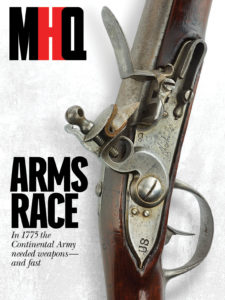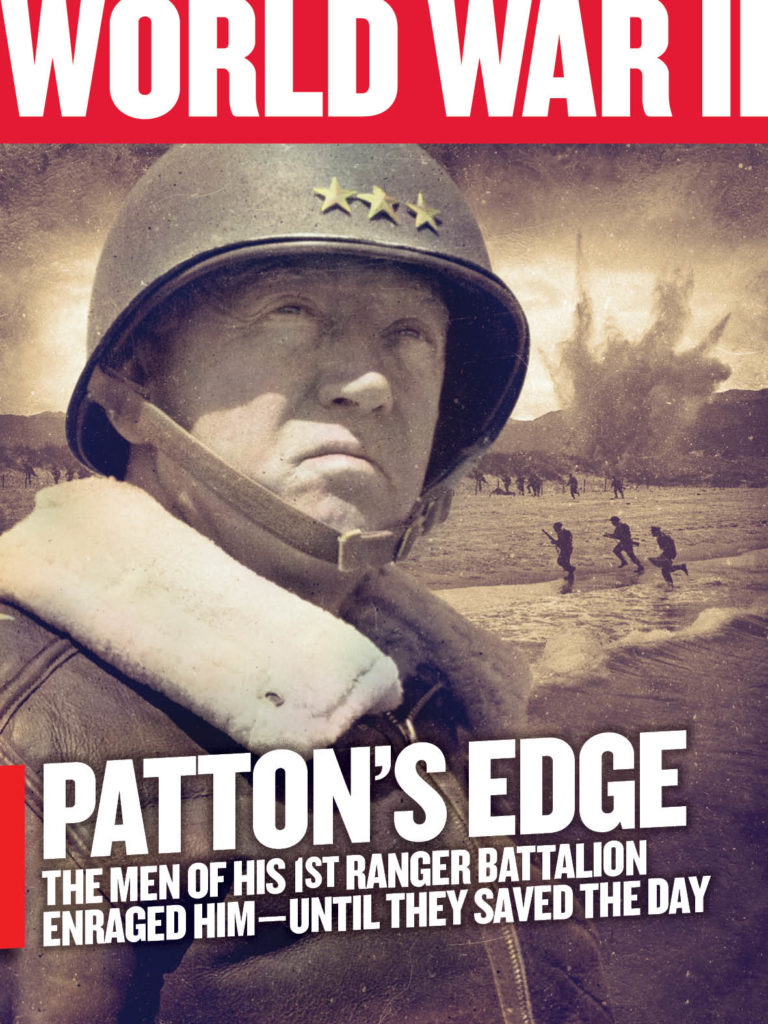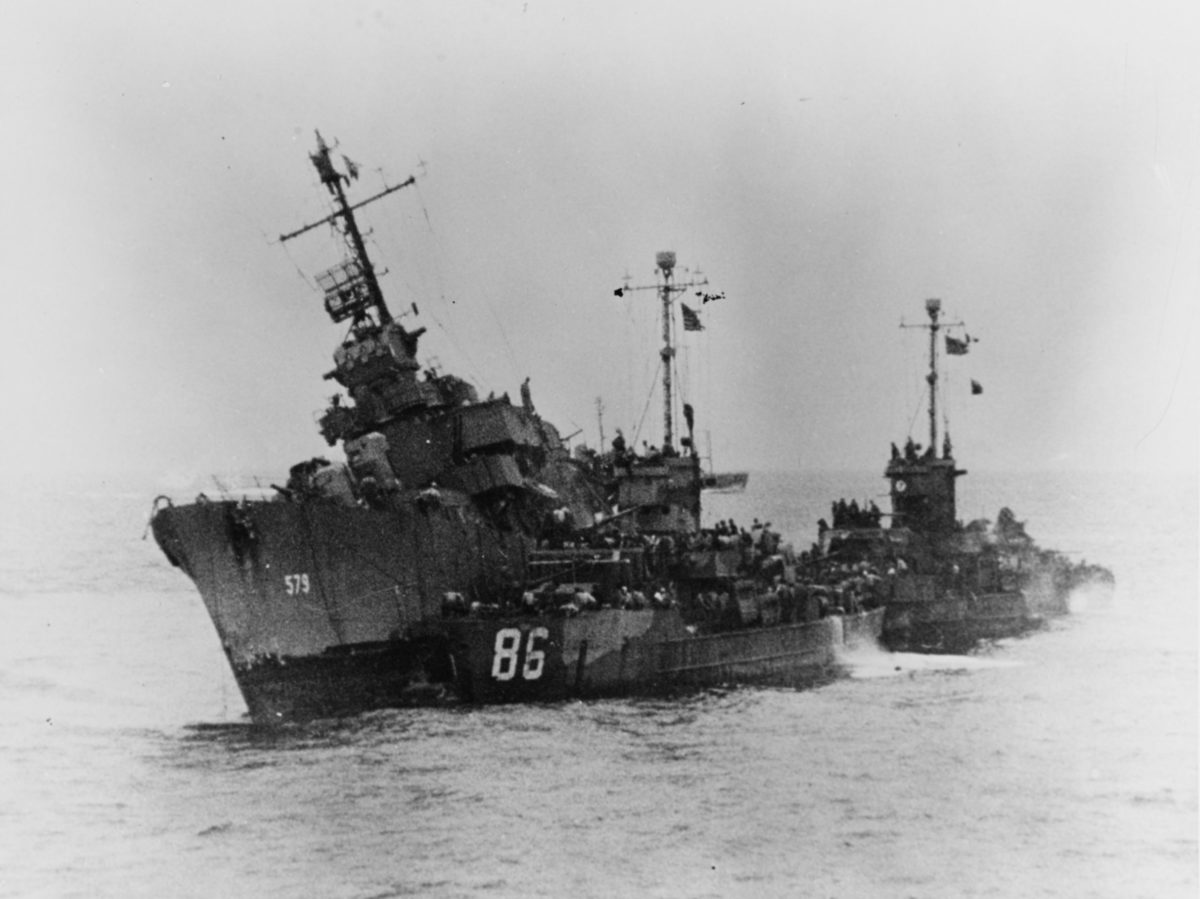During World War II, the U.S. Navy almost achieved what the Axis powers could only dream of: killing President Franklin Delano Roosevelt.
Commissioned on July 6, 1943, the USS William D. Porter, better known as the “Willie Dee,” garnered its namesake from a Civil War naval officer of the same name.
Placed under the command of Lt. Commander Wilfred A. Walter, the Willie Dee was soon about to embark on a series of calamitous events, culminating in an “attack” on President Roosevelt.
Perhaps the only thing newer than the Willie Dee itself was its green sailors. Walter commanded an extremely novice crew, where mishaps on a roughly $6 million ship became a slight issue.
GET HISTORY’S GREATEST TALES—RIGHT IN YOUR INBOX
Subscribe to our Historynet Now! newsletter for the best of the past, delivered every Wednesday.
The mishaps began as comedic scenes from Dumb and Dumber but evolved to the more serious, however, when the destroyer became an escort for the pride of the fleet, the new battleship USS Iowa, according to author Vince Fazio for the Naval Historical Society of Australia.
The Iowa was assigned to secretly shuttle President Roosevelt, Secretary of State Cordell Hull, and other military big wigs such as U.S. Fleet Commander in Chief Admiral Ernest King to the Tehran Conference, where Roosevelt was to meet British Prime Minister Winston Churchill and Soviet Premier Joseph Stalin.
The escort hadn’t even made it out of the Norfolk harbor before the first mishap struck.
On Nov. 12, 1943, the night before Roosevelt was bound for North Africa, the black sheep of the Fletcher-class family was performing a seemingly routine maneuver — reversing down along another ship’s side — when it managed to bump its anchor, causing the other ship to tear down railings, life rafts and other valuable pieces of equipment.
The Willie Dee, on the other hand, came away from the incident largely unscathed, with only its anchor sporting a scrape.
Yet the Willie Dee’s reign of unintended terror had just begun.
The next day, the four-ship convoy left American territorial waters and began cutting through the open ocean of the Atlantic. The destroyers were under strict orders to maintain radio silence: The Battle of the Atlantic still raged, and the crossing remained a fruitful hunting ground for Nazi submarine wolfpacks.
Suddenly, a tremendous explosion ripped through the silence. The convoy’s ships, thinking they were under attack, initiated anti-submarine maneuvers.
That is, all except the Willie Dee.
“The chaos continued until Walter [sheepishly] admitted that a depth charge had fallen off of the stern of the ship. The safety on the charge had mistakenly not been set, and when it crashed into the rough sea, it detonated,” according to Task and Purpose.
Just then, a freak wave inundated the ship, stripping away everything that was not lashed down. The wave washed a sailor overboard (sadly, he was never found), and then the engine room lost power on one of its boilers.
Commander Walter thus broke radio silence and reported to the Iowa.
One day later, on Nov. 14, President Roosevelt decided he wanted to test what was now the most powerful navy in the world. As the ships rounded past Bermuda — and apparently not deterred by the Willie Dee’s performance the previous day — the president decided he wanted to see the Iowa’s air attack defenses in action.
The crew of the Iowa launched weather balloons to simulate anti-aircraft targets. And in left-out-little-sibling fashion, the Willie Dee wanted to get in on the action.
Commander Walter sent his men to their battle stations.
Some of the crew began shooting at the Iowa’s balloons that had drifted toward their ship. But down below, other crew members were preparing to also take practice shots at the Iowa with … torpedoes.
“Lawton Dawson and Tony Fazio were among those responsible for the torpedoes. Part of their job involved ensuring that the primers were installed during combat and removed during practice. Once a primer was installed, on a command to fire, it would explode, shooting the torpedo out of its tube,” according to the author Fazio (who makes it clear he is no relation to Tony).
On this particular morning, Dawson had forgotten to remove the primer from torpedo tube 3. Up on the bridge, unaware of the dangers lurking below, the torpedo officer ordered the fake firing command.
What followed was the unmistakable “whoooosh” of a successfully armed and launched torpedo. It’s destination? Straight toward the Iowa — and the leader of the free world.
“The next five minutes aboard the Willie Dee were pandemonium,” according to historian Kit Bonner.
“Initially, there was some reluctance to admit what had happened, or even to warn the Iowa,” Bonner continued. “As the awful reality sunk in, people began racing around, shouting conflicting instructions and attempting to warn the flagship of imminent danger.”
The crew of the Willie Dee, not wanting to break radio silence, began flashing a warning signal. But, not surprisingly, the warning was executed improperly — and indicated that the torpedo, which was picking up speed at this point, was headed in another direction.
Next, according to Bonner, the Willie Dee signaled a full-speed reverse.
A deeply flustered Walter then had to break the strictly enforced radio silence again to alert the Iowa of its impending doom.
Reportedly, when Roosevelt was alerted that an errant torpedo was heading straight for him, he pulled a card straight from his cousin Teddy’s playbook and asked to be moved with his wheelchair over to the railing so he could see it.
Fearing that the mishap was an assassination plot, the Iowa initially turned its gun on the Willie Dee.
Thankfully for all those involved, the torpedo was detonated as it struck a heavy wave.
It was only after being pressed that Walter responded to the Iowa with a sheepish, “We did it.”
The entire crew was placed under arrest and sent to Bermuda to face trial — the first instance in U.S. Naval history that the entire crew of a ship had been arrested.
Dawson finally copped to being the one who left the primer in the torpedo and further admitted that he attempted to conceal the evidence by throwing the primer off the side of the ship amid the chaos.
The Bermuda inquiry found that it was simply incompetence, not malicious intent, that precipitated the “attack” on the Iowa on morning of Nov. 14. Roosevelt further intervened and decreed that no punishments be levied on the crew — including Dawson.
Wartime restrictions prevented the story from being released to the public until well into the 1950s. Still, that didn’t stop the news from spreading across the fleet.
The Willie Dee continued to serve through the end of the war, with its (new) crew being shouted at “Don’t shoot, we’re Republicans!” at every new port they entered.
historynet magazines
Our 9 best-selling history titles feature in-depth storytelling and iconic imagery to engage and inform on the people, the wars, and the events that shaped America and the world.

